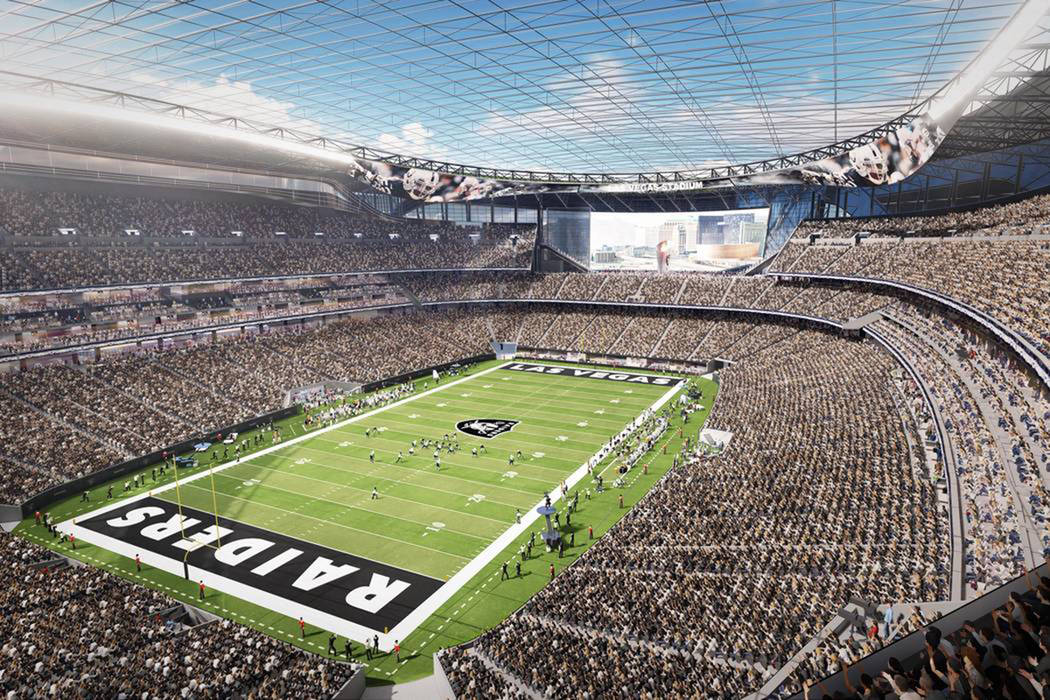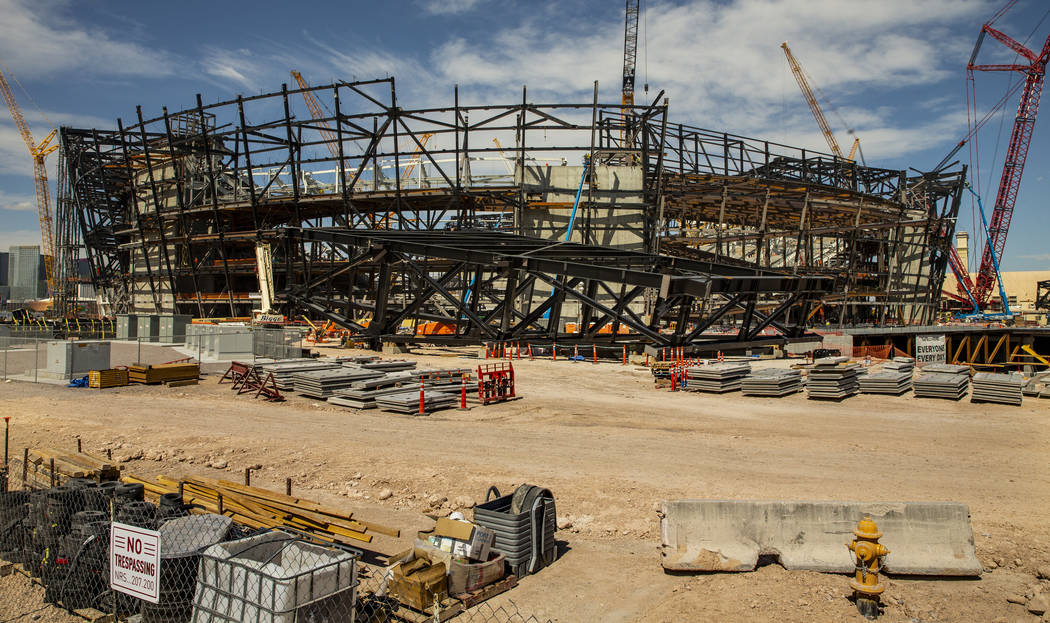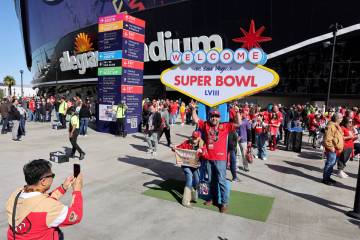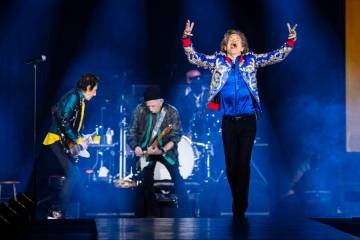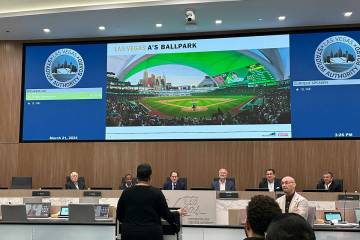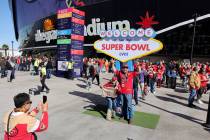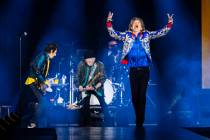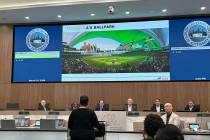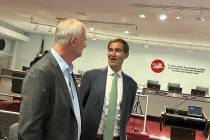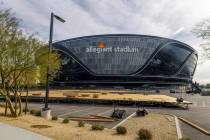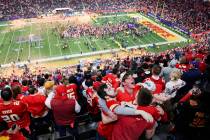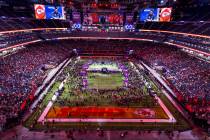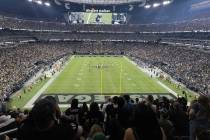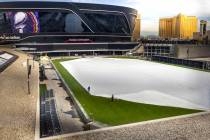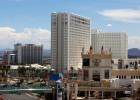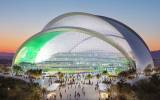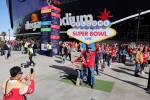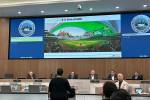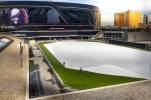AEG sees no problem filling 46 events at Las Vegas stadium
Ever since the initial planning phase, when it was said the Las Vegas Stadium could host 46 events annually, that number has been met with skepticism.
But AEG Worldwide, the events company tasked with filling the $1.9 billion, 65,000-seat domed stadium stadium with events, said Thursday it is confident it will be able to meet that quota.
Raiders and UNLV home football games will account for 16 events per year, leaving 30 other events to be scheduled at the stadium each year.
“This is a very special market,” Chris Wright, facilities regional vice president at AEG, said at Thursday’s Las Vegas Stadium Authority board meeting. “There’s a lot of interest. When you look at event planning and the number of folks who are looking to get into the market, I feel very confident about that number.”
The destination and the state-of-the-art stadium are a perfect pair to draw acts that have historically skipped Las Vegas due to the lack of an adequate venue, he said.
Wright has been working with groups to gauge interest in being the first musical act to perform at the stadium. He said they’ll have a good idea of what the first year of events will look like early next year.
“Everyone is excited. I regularly speak with touring managers, touring entities and large concert promoters in the market, and they’re very excited to have an opportunity to come to the entertainment capital of the world in a brand new stadium,” he said. “We should be a regular touring destination for most artists on the stadium level.”
Aside from big-name entertainers, other options include large-scale sporting events.
“There’s a number of college events that we’re looking at, and we’ll be very active in the college sports market and the alternative sports markets,” Wright said. “We’ll be looking to do a number of combat sports, in addition to some of the monster truck and entertainment type of events.”
This month the NCAA men’s basketball committee and NCAA staff were given a tour of the stadium, according to a tweet posted by the stadium’s verified Twitter account. The committee is tasked, among other things, with selecting the venue for the men’s Final Four.
A wide variety of events have already shown interest in coming to Las Vegas, Wright said, and he is confident they’ll live up to stadium executives’ expectations.
“When you look at the amount of programming, the different types of programming that we’re already engaged with, hitting that number doesn’t seem to be difficult at all,” he said.
Construction update
The stadium construction process is past the halfway point; steel work is expected to be topped off next month.
The authority approved $40 million of additions Thursday, raising the stadium budget to $1.9 billion. The additions include 20 more suites and a field-level club area in the north end zone. They are being paid for by personal seat license and club seat sales that weren’t factored into the original budget.
So far, $944.7 million has been spent on the stadium project, including $340 million generated by a 0.88 percent lodging tax on Clark County hotel rooms. That amount cannot exceed $750 million.
The final three of the 26 steel canopy trusses are being assembled and are expected to be installed in the next few weeks. After infill steel is put into place, the major steel work will be complete, said Don Webb, chief operating officer of Las Vegas Stadium Events Co.
He said a delay in steel delivery and manufacturing in the spring necessitated additional work shifts on top of the double shifts that have been occurring almost since the project began.
“What we’re talking about now is intensifying the schedule with some nights shifts and more heavily worked weekends in order to overcome the delays that we’ve had in the fabrication and erection of steel,” Webb said. “That will continue probably through the month of August.”
After the steel is topped off, the next big task is installing the cable steel roofing system that will support the translucent roof, he said. That will take place in September and October and will take six to eight weeks, he said.
“That’s such a large-scale operation, it virtually takes over the entire bowl of the stadium,” Webb said. “That pretty well restricts what can be taking place while that’s occurring. That’s a matter of safety. We’ve got a hundred cables overhead, and we don’t want to have anything happen overhead that can impact people below.”
Night shifts will return for that process, he said. Crews will handle cabling work in the day and interior stadium work at night.
The cables, up to 700 feet long, attach to a ring that must be within one inch of its designed location for the cables to fit properly.
The interior work has been taking place out of timeline, Webb said; all the stadium’s elevators and most of its escalators are already in place.
“That’s an example of some of the interior work that normally wouldn’t be occurring until it’s closed in, its roof and walls in place, but are occuring now so that we can overcome the schedule delays on steel,” he said. “It’s a matter of taking things out of sequence, evaluating the cost of taking them out of sequence, what kind of risks are associated with that and measuring that against the benefit.”
Contact Mick Akers at makers@reviewjournal.com or 702-387-2920. Follow @mickakers on Twitter.



